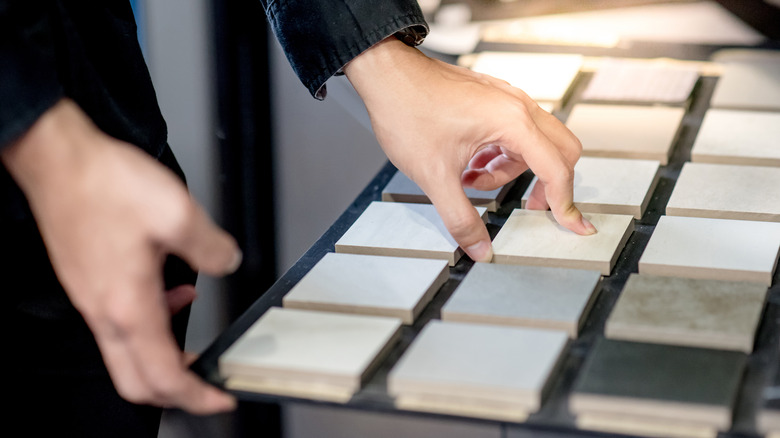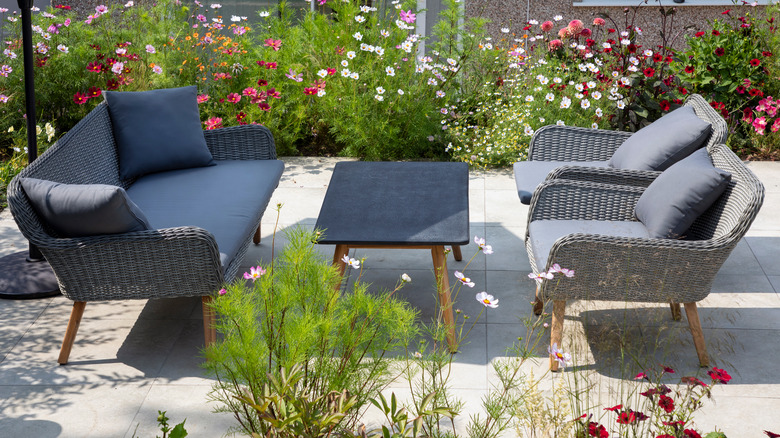What To Consider Before Choosing Porcelain Tile For Your Modern Patio
If you have a modern house, you most likely want to have a modern patio. A contemporary house usually has clean lines, utilizes minimalist color palettes, and has unfussy details. Because of this, you have to design your modern patio carefully. Using traditional materials such as brick, slate, or granite would look too stately. Instead, you want to choose something a little more current, such as porcelain. Thanks to its clean lines and minimalist appearance, it will blend right in with the latest designs. However, there are some things you should consider before commissioning a whole patio made from porcelain, and that is its grade.
Dubbed the "PEI rating scale" and created by the Porcelain Enamel Institute, the grade measures how hard the glaze is. It is evaluated on a scale from one to five, with one being the weakest and only suitable for light traffic and five being the strongest and ideal for heavy traffic. The rating tests how abrasion-prone the tiles are, giving the consumer an idea of how easily scuffed their selection could get. However, while five might be the strongest, that doesn't necessarily mean you should get that class. Here is a deeper look into how to choose the right porcelain tile grade for your modern patio.
How to read porcelain tile grades
First off, the PEI scale doesn't measure quality, just durability. That means you aren't pigeonholed into Grade 5 porcelain if you want the best tile for your project. Instead, you should choose the grade that best fits the amount of foot traffic you anticipate the area will receive. Think of it this way: if Grade 1 tile is the least durable, then it might not hold up as entryway flooring, but it would be great for a backsplash. To make an informed decision, you need to know what the different grades entail.
Grade 1 porcelain tiles are most suitable as wall tiles, whether that's as a statement wall, kitchen backsplash, or shower wall. Grade 2 tiles are for light traffic areas — such as formal living rooms and dining rooms — and can also be used on countertops. Grade 3 is the grade that most porcelain floor tiles are rated, and it is best for rooms with average foot traffic. It's great for pretty much any room, whether that's the entryway, kitchen, or, yes, a modern patio. Grade 4 and 5 are best suited for commercial buildings, such as shops or restaurants. However, Grade 4 can also be used in a home, especially in high-traffic areas, such as mudrooms or patios, that can get worn down faster. However, you likely won't need to go up to Grade 5, as that's reserved for places like hospitals or schools.
Caveats to keep in mind
Now that you know a Grade 3 or 4 rating is best for tiles you can use for your outdoor patio, you're ready to hit the store and choose your selection. But, there are some caveats to keep in mind before doing so. First, a PEI rating only tells you how durable the tile is. It doesn't tell you the thickness, how susceptible it is to cracking, or if it's slip-resistant for patio flooring. Instead, it tells you how well the glaze will hold up to wear and tear. However, since you likely won't be throwing heavy things like weights onto your patio floor, the PEI rating should be enough.
Also, tiles with a higher PEI rating usually come with a higher price tag since they're more durable. Still, that doesn't mean you won't be able to find patio tiles within your price range. Just know that buying porcelain tiles for patio flooring will be more expensive than purchasing porcelain tiles for your backsplash. So, how do you find the rating? Look for a PEI grade in the product description, sales sheet, or on the tile's packaging. If you can't find one, you can get a hint of what the PEI is by seeing where it is recommended to be installed. For example, if the porcelain is best for backsplashes, you won't want to use it for the patio. But if you're recommended to use it as interior or outdoor flooring, you're good to go.


